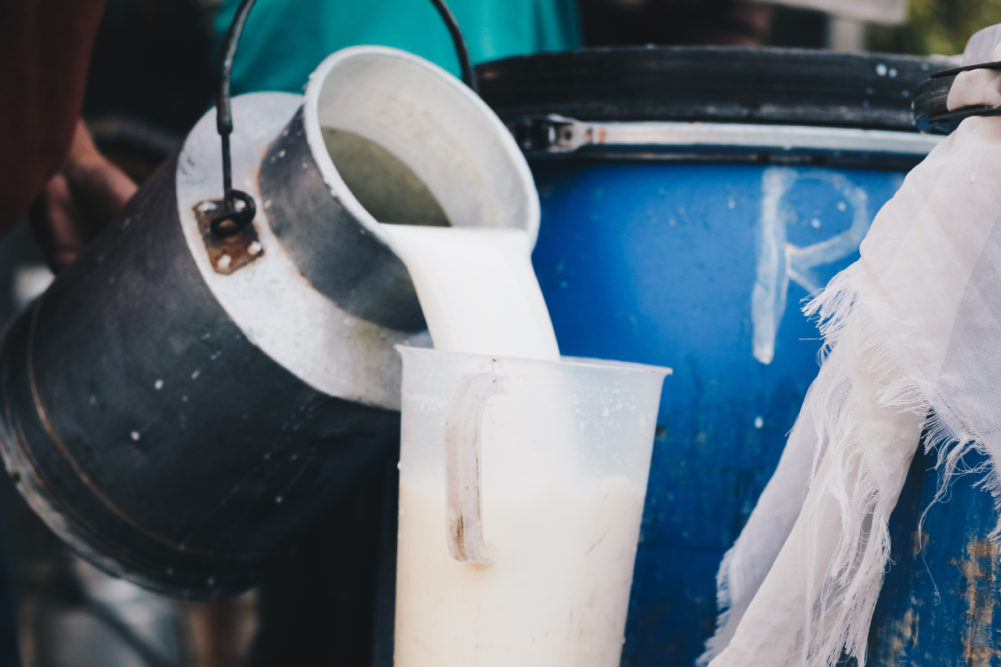In 2023, three states – Georgia, Iowa and North Dakota – enacted laws allowing the sale of raw, unpasteurized milk, becoming the latest examples of an abrupt and alarming policy shift coast-to-coast.
In just the past five years, the number of states legalizing raw milk sales jumped from 20 to 46. Most restrict raw milk sales to the farm site, but a growing number – now 14 – allow retail grocery store sales, too.
The great debate
In Wisconsin, strong opposition from processors and their advocacy organizations, including Wisconsin Cheese Makers Association (WCMA), alongside farmers and representatives of the medical community ended four separate bids between 2009 and 2016 to allow broad sales of raw milk, accepting only incidental exchanges between a farmer and consumer.
The debate over raw milk sales has lain dormant in America’s Dairyland since then, but in late November, a small group of Wisconsin lawmakers introduced a new bill designed to legalize both the advertisement and retail sale of raw milk, requiring only very limited testing and reporting on the part of dairy producers.
It’s an irresponsible idea, jeopardizing both consumers’ well being and the strength of a backbone industry for Wisconsin.
What's at stake
Let’s refresh ourselves, first, on what’s at stake when it comes to public health. Raw milk can carry Campylobacter, Cryptosporidium, E. coli, listeria, Brucella and salmonella – all harmful and sometimes lethal pathogens. People who get sick from raw milk may experience gastro-intestinal distress, but others – more likely young children, senior citizens, the immuno-compromised and pregnant women – can experience severe complications, including Guillain-Barré syndrome, which can cause paralysis, and hemolytic uremic syndrome, which can result in kidney failure, stroke or death.

John Umhoefer, executive director, Wisconsin Cheese Makers Association
| Photo: WCMAFrom 2013 through 2018, 75 outbreaks voluntarily reported to the Centers for Disease Control and Prevention (CDC) were linked to raw milk. Outbreaks during those years sickened 2,645 people and caused 228 hospitalizations and three deaths.
More recent reports reveal a continued pattern. In November 2023, four people were hospitalized and another 20 made sick by consumption of raw milk in California and Utah. In September, five people in Wyoming were infected with Campylobacter and E. coli bacteria, landing two children in the hospital. Just a few months earlier, the Minnesota Department of Health reported one child hospitalized and seven people sickened with cryptosporidiosis and E. coli after drinking raw milk.
There have been outbreaks in Wisconsin, too. Notably, in 2014, 38 people gathered for a high school football team dinner all consumed raw milk and suffered Campylobacter jejuni infections, with 10 hospitalized. In 2011, 16 fourth graders and their family members became ill after they drank raw milk at a classmate’s birthday party. One of the children was hospitalized because of the outbreak.
The scientific data and illness outbreak records we have, now dating back more than 100 years, make it clear: raw milk is not a safe commercial product. While less than 2% of all foodborne illness outbreaks in the United States can be attributed to dairy, more that 70% of those illnesses can be attributed to raw milk exposure. Laws placing raw milk next to pasteurized milk on grocery store shelves invite consumer confusion and the potential for great harm.
Raw milk is neither a safe nor a smart product to have on the shelf for a state like Wisconsin, where dairy is a $46 billion industry, contributing 157,000 jobs and $1.26 billion in state and local taxes. While we don’t yet have studies on the economic losses associated with raw milk recalls and illness outbreaks, a US Grocery Supplier study found in the 12-month period following large spinach and peanut butter recalls, almost three-quarters of consumers stopped purchasing those products out of safety concerns. There’s real cause for concern.
Raw milk sales – and illness outbreaks – jeopardize the trust our nation’s dairy farmers and processors have hard-earned from consumers around the world, delivering generations of nutritious, delicious and – importantly – safe dairy products.
Most Americans seem to understand both the public health and economic arguments against this change in public policy. Despite growing access to raw milk in the United States, the product still accounts for less than $20 million in annual sales. It’s an amount that pales in comparison to total dairy milk sales, which reached $15.7 billion in 2022.
Legislators pushing for retail raw milk sales, both in Wisconsin and in other states, are catering to a small, self-interested group of vocal constituents, or perhaps their own personal beliefs, rather than the will of the majority.
With so much at risk and a clear trend toward the legalization of raw milk sales, it is time, once more, for dairy processors to get loud on this issue. Make your voice heard, whether directly to your elected officials or via trade organizations like WCMA. Tell lawmakers that raw milk sales are bad for the health of American consumers and they’re bad for our business.
WCMA has encouraged and supported growth in the nation’s dairy industry through advocacy, education and healthy competition and collaboration since 1891.

